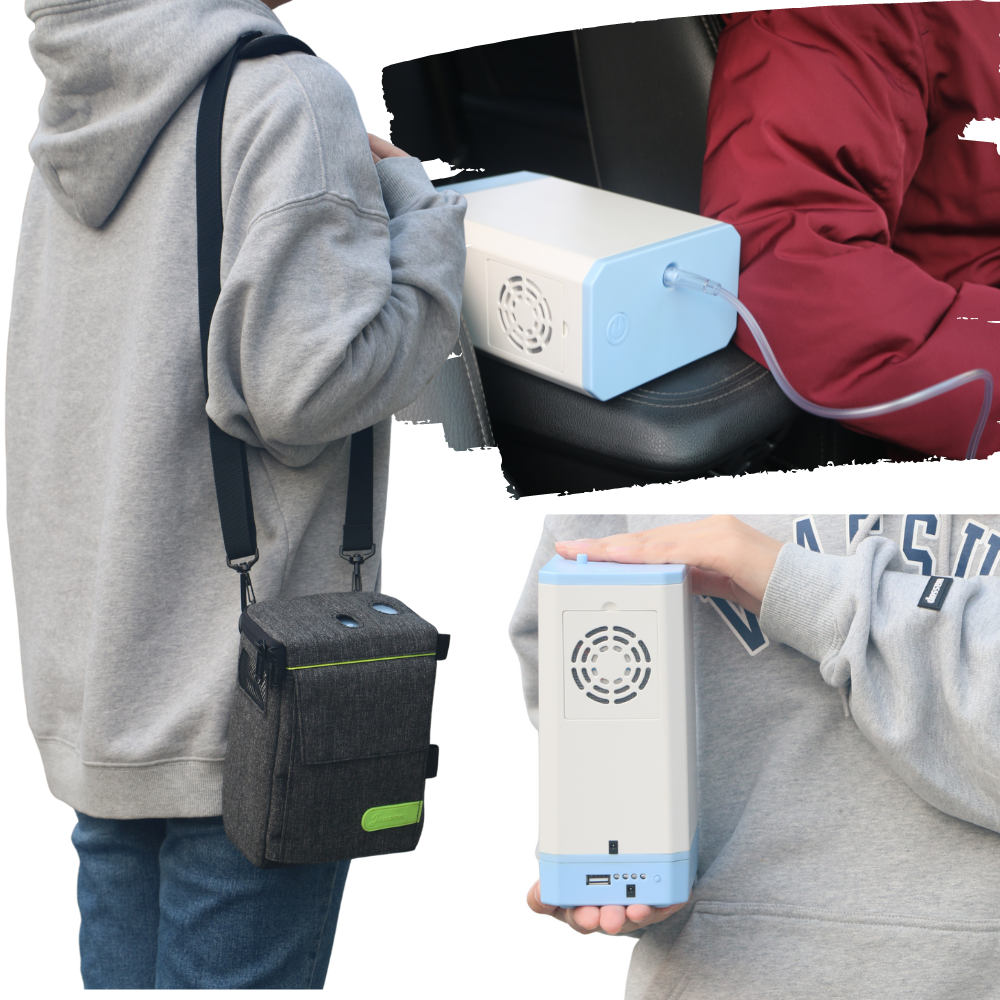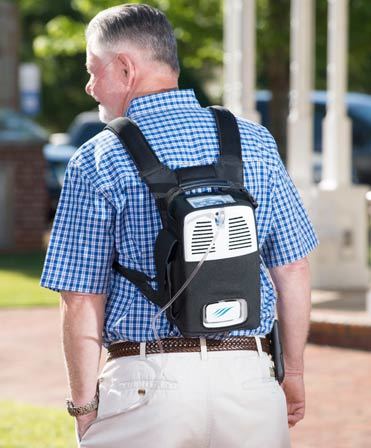Get This Report on Portable Oxygen Concentrators
Table of ContentsThe smart Trick of Portable Oxygen Concentrators That Nobody is Talking AboutIndicators on Portable Oxygen Concentrators You Should KnowWhat Does Portable Oxygen Concentrators Do?The Best Guide To Portable Oxygen Concentrators
Fixed oxygen concentrators were once the criterion, but these tanks can weigh 50 pounds and were very cumbersome (Portable Oxygen Concentrators). Now, portable oxygen concentrators obtain the work done, and they can fit right into a purse or bag! The only thing you need to remember is that mobile concentrators have more minimal oxygen shipment abilitiesThere are 2 primary kinds of portable oxygen concentrators: pulse dosage and constant flow. As the name suggests, pulse dosage concentrators give oxygen intermittently, only triggering when you inhale. This kind of tool is generally advised for COPD patients with minimal oxygen requirements, as the quantity of O2 that a pulse dosage concentrator can provide is fairly reduced.
This gadget can deliver up to 3,000 m, L of oxygen every min, while pulse dose devices tend to cap out at 1250 m, L. Constant flow tools are the go-to for most COPD individuals, as they're perfect for people who need 2 to 5 litres of oxygen a minute.
Since you have this guide to the various types of mobile oxygen machines, pick the finest gadget with the aid of your physician. You can discover our blog sites to find out more about the sorts of mobile oxygen available and our various other items, like tubes and cannulas. Or you can call us directly with any kind of particular questions you could have.
The Only Guide for Portable Oxygen Concentrators
We know Americans use domestic versions in home treatment circumstances. We asked yourself exactly how well these portable oxygen concentrators would operate in healthcare facilities. POC concentrators boost the proportion of oxygen in ambient air people inhale, whenever they require a boost. Private-use ones are little sufficient to lug about, and may assist stay clear of the need to check out congested facilities and healthcare facilities.
When it involves portable oxygen therapy, there are 2 major choices for distribution. These are portable oxygen cyndrical tubes which include compressed oxygen gas, or oxygen concentrators, which use a battery powered system to compress and filter air, in order to develop a constant supply of concentrated oxygen. In this blog post, AMS Compound Cylinders Technical Supervisor, Tony Morrin, contrasts both, taking a look at the pros and disadvantages of each oxygen delivery system for NHS medical oxygen customers in regards to patient freedom.

Mobile Oxygen Concentrator Oxygen purity is consistently higher when supplied from cyndrical tubes it never goes down listed below 99. 6%, no matter of the flow rate needed. In battery-powered concentrators, pureness is affected by flow rate, and may be 90% or much less, depending upon the tools. Whilst oxygen concentrators can be beneficial for patients that require a reduced flow of oxygen, cylinders offer greater concentrations that can be preferable for clients with high flow needs.
The Main Principles Of Portable Oxygen Concentrators
Both systems require the individual to carry about devices. For cyndrical tubes, this will certainly consist of carrying a bag (and sometimes a trolley) and for mobile oxygen concentrators this will consist of the bag, cart and power battery charger. Weight wise, mobile oxygen concentrators can be equivalent in weight, or sometimes, useful site lighter than conventional aluminium cylinder systems.
They will have to boost significantly if they are to offer the exact same degree of performance as similar composite cyndrical tubes. Oxygen constantly brings a safety threat. On one hand, must cylinders spring a leakage, they can develop an oxygen rich atmosphere that can cause a boost in fire risk.

The distinction is that there are significant ahead of time expenses to acquiring a portable oxygen concentrator, however lower running costs making use of cylinders enables the buyer to spread out the cost over an extensive period of time. One small disadvantage of a portable oxygen concentrator is the noise mobile systems make a significant amount of noise during operation, which numerous clients locate disruptive.
Unknown Facts About Portable Oxygen Concentrators

Our premium carbon composite cyndrical tubes provide high stress (300 Bar), reduced weight, and NLL (Non-Limited Life) efficiency, and are approved for usage worldwide. More information regarding AMS Compound Cylinders Ltd can be located at .
Oxygen concentrators are made with customer mobility in mind. Whether it's a desktop variation for home usage or a smaller sized, light-weight model for on-the-go, these devices permit patients to relocate freely without being tethered to a stationary unit. Particularly for the ones specifically designed for portability, patients can lug them about, facilitating traveling and everyday activities easily.
One click here for more info of the major comforts of utilizing an oxygen concentrator is the removal of the frequent demand to fill up oxygen tanks. This not just minimizes the logistical challenges and persistent expenses connected with refills but also ensures that the user has a much more predictable and stable resource of oxygen. Oxygen concentrators are developed to fit seamlessly right into the home environment.